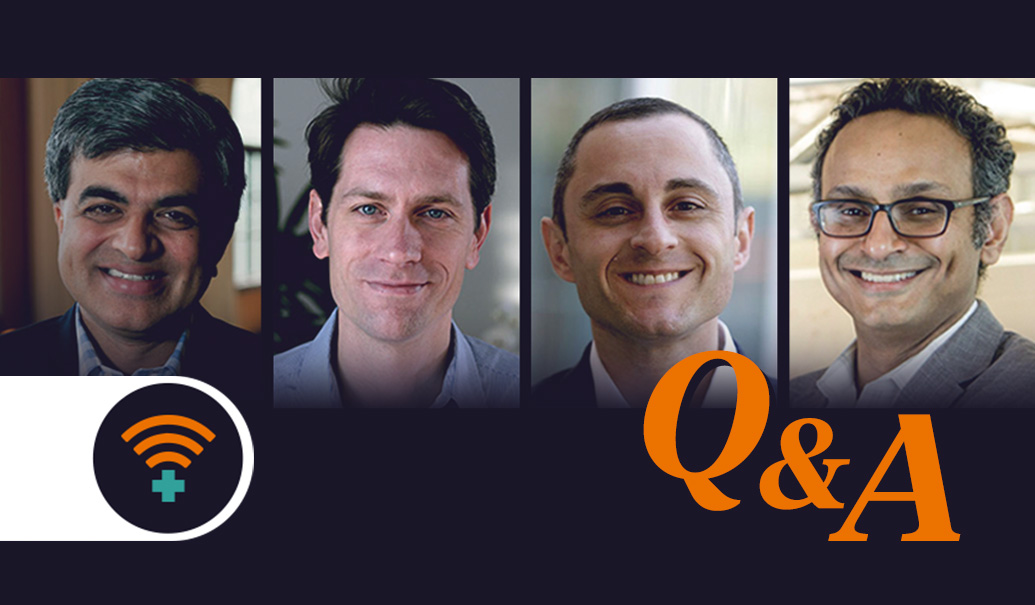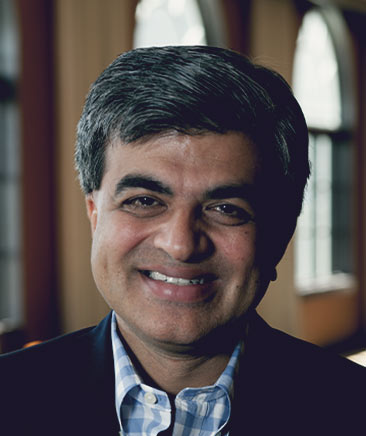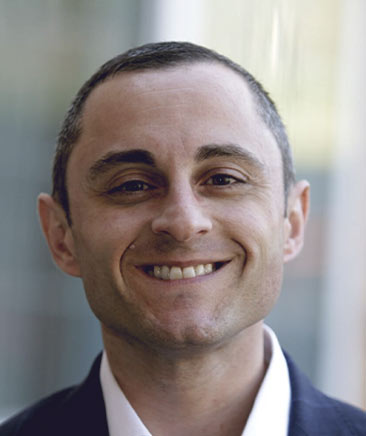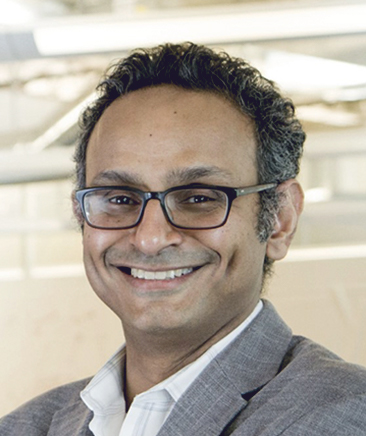Despite the investments in connected health that biopharma, medtech and health plans have made so far, patients still aren’t getting what they want from their care or wellness journeys. But there is hope. If the industry brings together its collective expertise and agency to address important challenges, it will be possible to bridge some of the disconnects that healthcare consumers are experiencing.
In a conversation with our CEO and principals who are experts in biopharma, health plans and medtech, we discussed how building the kind of healthcare system we’d all like to see will come from innovative partnerships across the ecosystem. We heard about where many of these disconnects come into focus, as well as where we’re seeing true innovation in some of the current ventures that are underway to address them. Our experts also shared what each of these industries can do—both on their own and together—to drive their own positive momentum.
ZS: What is the one mindset change the healthcare industry needs to make to get on the right path toward a more connected and equitable future?
Pratap Khedkar: They have to change the mindset that any one of them individually is going to be able to solve the problem. I think that everybody believes that they’re actually making a big difference, and everybody else is at fault for stopping them—Wall Street pressures, business challenges and so on. You cannot solve most problems alone. You have to team up. I’ll call it multilaterality.
Peter Manoogian: No matter how much an organization tries, it’s a shared mission. And in many cases being customer centric means recognizing when you aren’t the focal point for the customer or patient in that specific interaction or use case.
Ahmed Albaiti: We have to figure out—what is healthcare and what is sick care? There’s so much that can be done in healthcare. But we spend so much time and energy on sick care that we do not do justice to healthcare. Sick care is not sustainable for the planet. I think a mindset shift is, how can we do more in healthcare in order to do less in sick care?
Brian Chapman: I would like to see the healthcare industry stop thinking about healthcare as a place you go to receive a thing and instead think about it as a state that we’re seeking. Healthcare doesn’t come from inside a building. If your notion is sick care, then you absolutely need to go to a building to get cared for.
ZS: Why do you think it’s so hard to get those in the healthcare industry to adapt their mindsets?
PK: It’s really hard to monetize a shared vision. The economic structures have to change to support the idea of working together.
AA: That’s true. It’s pervasive in accreditation. It’s pervasive all the way back to medical school training. Healthcare can become a competitive sport. The democratization of care across segments is just not incentivized. From the moment people get in the healthcare business, it’s set up that way.
BC: A lot of incentives are structured around payment flows for caring for sick people in specific locations and not nearly as much for preventing things that we don’t want to happen.
ZS: What are some examples that you’ve seen of organizations or partnerships that are overcoming that mindset and expanding their perspectives of care?
BC: We are seeing some green shoots in the way conditions like diabetes is managed. What’s interesting there is it’s more than just delivering a medication to manage a chronic disease. There are a lot of other interventions: diet and exercise coaching, for example, and following body metrics to modify care. These behavioral changes can happen while the patient is out in the community, rather than only during their face-to-face encounters with healthcare professionals.
AA: Integrated care models are gaining ground and becoming a global trend. When financial incentives, performance and the greater good are part of the discussion, you tend to get good results. We see this in pay-for-performance models and integrated total cost of care programs.
PK: Integration is one way to get to multilaterality. The other is acquisition, which is the UnitedHealthcare strategy, which aims to own as many lanes as it can—some physicians’ practices, ambulatory surgery centers, data and so on. You can acquire at scale, but then stitching it together is a hard job. The question is, do you get big, acquire the pieces and then many years later figure out how to integrate them? CVS is on the same journey with Aetna. The ventures that have started relatively small and integrated from the beginning are able to make more progress. But at some point, they hit the scale barrier. There are some bright spots, but so far they are not sustained.
PM: Some companies like Omada Health are going beyond just one specific chronic disease to cover four or five chronic areas. They’re partnering with entities like Evernorth. And they are integrating well from a tech standpoint and doing this in a whole-person, location-agnostic way, as Brian has pointed out. You don’t need to own all of the pieces in the care continuum to provide whole-person care.
ZS: Which of these examples are true innovators or disruptors?
AA: As you said, Pratap, many of the true innovators are on the small side. But their consolidation is a bright spot—companies like Teladoc merging with Livongo, Vera Whole Health and Castlight, Grand Rounds and Included Health. It’s inevitable that the bright spots will become brighter. The other thing they have proven is that patient centricity, and not patient focus, creates value. The question is, who will be the first to show value at scale?
ZS: We’re talking about moving healthcare beyond the place where it happens, the condition, the device or the therapy. What are some ways to break down these very big challenges into smaller issues to solve, in a way that will bring lasting impact?
AA: One step is patient health record portability. The “P” in HIPAA stands for portability. I worked in a hospital when we rolled out HIPAA and I thought, “What is this? What is portable about this?” Now we’re starting to see the ability for patients to request and control their information. I know it sounds obvious, but it is such an important part of giving people low-friction care across the system. It’s starting to happen with standards groups like the CARIN Alliance. We just need more groups that can interconnect and be governed so more industry players can participate and see the value of that portability. Right now, there’s still some competitiveness about who should own the data and where it should go.
BC: I would add that if you could put all of that data together and it literally did follow the patient, the healthcare providers would have a really hard time dealing with it. How do we digest all of this data? We’re talking about being able to follow the patient wherever they go, with a wearable or an implant, for example. All of this information could make you extremely good at helping that person with a diagnosis or to manage any issues. But bringing all the context needed to this data becomes a monolithic task. It’s going to take person and machine to eventually get to that point. It comes down to how do I visualize this data and what decisions do I make?
PK: If you set out to solve the big problems—every disease, every type of person, every country—you’re going to die under this weight. If you start small, then at some point you hit the scale barrier, as Ahmed pointed out. We should look to build these solutions for someone, not for everyone. But how? Are we talking about a patient segment in all diseases? Are we talking about a particular group of therapy areas, like diabetes? Or some other third dimension that we haven’t thought about? I think that will be an important element, because no one company, or even a small collection of like-minded players who agree to collaborate, can tackle the whole problem.
PM: The customer segment is important to target, but which stakeholders need to be involved and have a stake in the game matters too. So in other words, how many quadruple-win scenarios are out there for life sciences, providers, health plans and patients? Medication adherence is probably one of them, for instance.
BC: I want to make one other point to demonstrate the complexity. It could be possible to look at the U.S. system and say, “Gosh, we’re so fragmented. We have so many different constituencies, and patients will bounce between them, whether it’s different payers, different hospital systems and doctors they might work with over time. If only all this stuff were portable.” Well, the reality is we can look at a country like the U.K. with its NHS England that has a single infrastructure, single payer, single patient data record environment—the promise seems there. But that system still has issues to solve because of the diversity of the population. The idea is to find a dimension to break the problem down so it has sufficient scale to be meaningful but still can actually move the needle in practice.
ZS: What are one or two practical steps medtech, pharma and health plans can take today that will help us move from sick care to life care?
BC: The medtech industry has an enormous opportunity to lead because data comes from the devices it makes. The threat is that medtech companies could become electronic component manufacturers. The changes we’ve talked about here require a dramatically different mindset and set of muscles. User experience, patient centricity—these things are not top of mind today. I see this as both an opportunity and a threat, because medtech could totally miss the bullseye.
ZS: What about bringing together clinical strengths with the user experience strengths of big tech as a potential opportunity?
BC: Medtech is really good with the clinical side. Consumer companies are really good with the user experience, but they struggle with the clinical expertise. Medtech struggles with the consumer. And so the question arises, who will figure out the other industry’s secret sauce first?
AA: Will we see medtech and consumer tech companies teaming up or doing roll-ups? I think some players will buy others and some will disrupt others. Government agencies are figuring out how to better regulate the onslaught of digital health and connected devices. This whole notion that real-world data and real-world evidence will start becoming an expectation for the FDA? Hallelujah, right? I mean, there’s so much information there that you don’t get from the randomized clinical trial data sets. And I have to say, I really believe that health plans are starting to see their value proposition as innovation facilitators. I’m excited about what health plans will do for the next 10 years.
PM: This echoes what we’ve been saying for a few years now around how health plans need to embrace the role of being a better facilitator. There’s no other constituent that has a better view of the entire healthcare system than health plans. They need to continue their efforts to go beyond just explaining benefits to explaining how to help people better navigate the system.
PK: I would say to the healthcare industry, it’s not just about the outcomes. It’s also about the experience. Some people in healthcare will say, it’s all about the innovation to get the good outcome and the experience is a sideshow. But the experience is not only important because the patient demands it—a good experience leads to better outcomes. That’s because the patient’s mental state and engagement is a much bigger driver of their overall well-being than many are willing to acknowledge.
Add insights to your inbox
We’ll send you content you’ll want to read – and put to use.


















